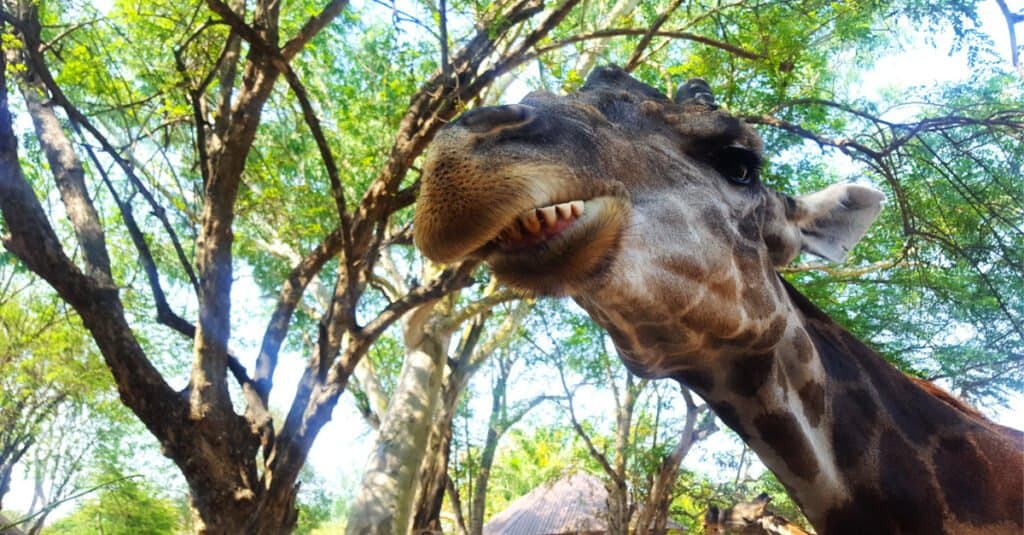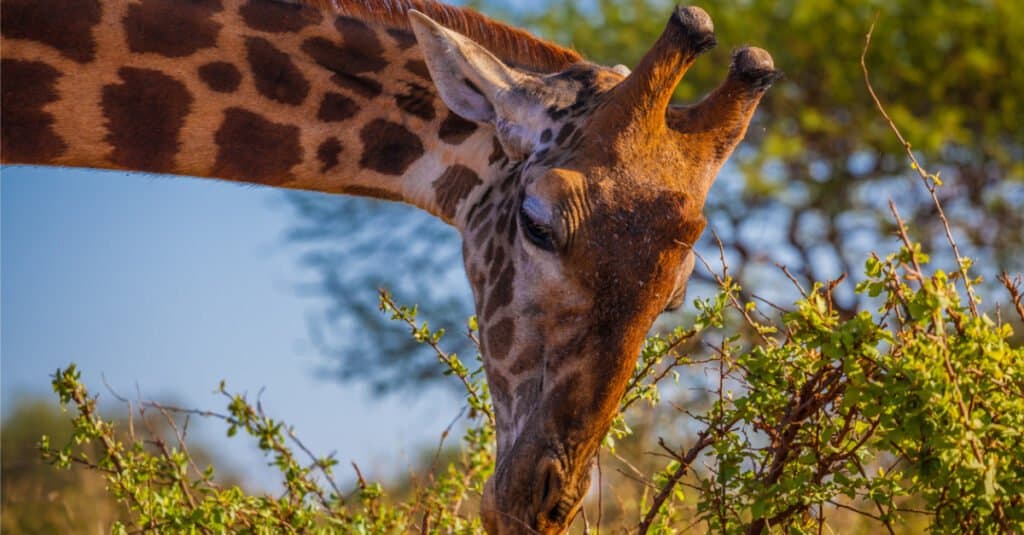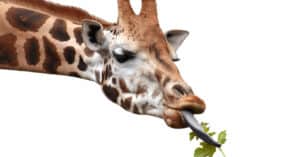Have you ever seen a giraffe? If you have been in the zoo at least once in your life, then you pretty sure have, because with these magnificent beasts’ height, you will certainly not miss them! Giraffes are the tallest living land mammals in the world, measuring over 18 feet in length for males or bulls, and about 15 feet for females, also called cows. Giraffes are commonly spotted over African savannas and woodlands, especially Tanzanian parks and reserves.
The giraffe’s height is elevated mostly by its long neck, which can stretch up to 7 feet. The giraffe’s neck helps them reach food sources from tall trees where no other herbivores can eat from, giving them highly exclusive feeding grounds. This also allows giraffes to see incoming predators easily enough to escape. A giraffe’s neck is also hefty, it can weigh up to 600 pounds. With these long, specialized necks that are built to reach far up into trees, you might be wondering how giraffe teeth are also specialized. Let’s dive in!
How Many Teeth Do Giraffes Have?

Giraffes, like humans, possess 32 teeth, but have most of them located at the back of their mouths.
©LindyCro/Shutterstock.com
Giraffes have teeth that are somehow similar to humans. Like us, giraffes possess 32 teeth. Most of their teeth, however, are located at the back of their mouths.
Unlike other mammals, giraffes do not eat their food using their front teeth. Instead, they grab leaves and twigs using their lips, slide them down their mouth using their extremely long tongues, and then disgorge the food and use their back teeth to chew the food before swallowing. Giraffes don’t have any upper front teeth, which may sound odd, but is actually not a huge deal for giraffes because they don’t use them anyway.
Due to the giraffe’s gigantic physique, it is only natural that the organs and other body parts of the animal are also massive. A giraffe’s tongue can measure up to a hefty 21 inches long, while its feet measure 12 inches in width on average.
What Do Giraffe Teeth Look Like?

The roots of a giraffe’s teeth are lengthy.
©iStock.com/Fearless on Four Wheels
Many are wondering if a giraffe’s teeth are also long, in proportion to their long necks and legs. Indeed, giraffe’s teeth are pretty lengthy, particularly the roots, which are noticeable. Their heads are slim, so their molars are not as wide as most mammals.
What Kinds of Teeth Do Giraffes Have?
Some people believe that giraffe teeth are long canines, but they are actually extra-long incisors. Moreover, the majority of a giraffe’s teeth are molars, which are located at the back of their mouths. They also lack upper front teeth, making their lips look bigger than they actually are.
On the internet, it is easy to spot smiling giraffes, and by taking even just a quick look, you can easily notice that they have pretty even lower teeth, but missing upper ones. It is because giraffes, like cows and other cud-chewing ungulates, do not possess any upper incisors at all, making them look like they are missing their top front teeth.
How Do Giraffes Eat and Chew Their Food?

Giraffes have ridges on the roofs of their mouths which help move food down their throats.
©iStock.com/Yuliya
Giraffes possess a firm dental pad to assist them in getting large amounts of plants into their mouths. The ridges on the roof of their mouth aid in the movement of food towards the back and down the throat.
Giraffes smash up their favorite food, acacia leaves, with the powerful set of molars located at the rear of their mouths. Because thorny acacia bushes can be difficult to munch on, giraffes have thick lips as well as an incredibly long tongue to assist them in grabbing leaves towards their mouth, so these lips are also big for a specific purpose. Moreover, since giraffes only have bottom teeth, their lips appear to be bigger.
What Do Giraffes Like to Eat?

As herbivores, giraffes eat acacia trees and leaves, mimosa trees, vegetables, and grass.
©iStock.com/resimone
As herbivores, giraffes love to eat a diet that includes Acacia trees and leaves, which are their favorite, mimosa trees, vegetables, fruits, grass, flowers, seeds, and more.
Giraffes do not hunt for prey like carnivorous mammals, instead, they forage through trees and vegetation using their long necks and tongues. The giraffe’s neck might look like a mere physical asset for onlookers, but it actually plays a very important role for them. Several muscular muscles and strengthened ligaments hold the neck, which is attached to the vertebrae between the shoulder blades and forms an inward bump where the back and neck intersect.
Believe it or not, giraffes are one of the very few non-flying mammals who help in pollination, alongside bats, lemurs, and possums. The fact that giraffes are one of Africa’s most important pollinators is something that many people don’t realize. They function similarly to bees in the sense that they carry pollen from one tree to another. In addition to getting caught on their bodies, pollen is transferred to the next bush while they eat. Acacia leaves and flowers are their primary source of nutrition, and they spend the majority of their time foraging and pollinating in the Acacia forest.
How Much Food Do Giraffes Chew On Daily?
Giraffes devote the majority of their days searching for, and then consuming, a variety of snacks and small meals. They can take in more than 100 pounds of leaves every single day!
Giraffes have a variety of characteristics that assist them in eating as they use approximately 18 hours of their day searching for food. They have evolved to be highly efficient feeders, which allows them to consume more than 75 pounds of food per day on average. Giraffes consume between 1.6 percent and 2.1 percent of their body weight on a daily basis, depending on their size.
Can you fathom how many times we would have to brush our teeth if we consume that much food on a daily basis? Fortunately, most animals are not susceptible to cavities in the same manner that people are. While their meals naturally include little sugar, their behavior of gnawing on items such as bone or tree bark can be beneficial in keeping their teeth clean and healthy.
The photo featured at the top of this post is © iStock.com/Fearless on Four Wheels
Thank you for reading! Have some feedback for us? Contact the AZ Animals editorial team.






